Urban Greening - The Colchester Woodland and Biodiversity Project
The Colchester Woodland and Biodiversity Project shows us how caring for the natural world can bring a community together.
Rachel Mason from Colchester Borough Council has seen the town revoltionised following a greening scheme involving many different community groups. Here she explains why nature can be such a great leveller in these trying times.
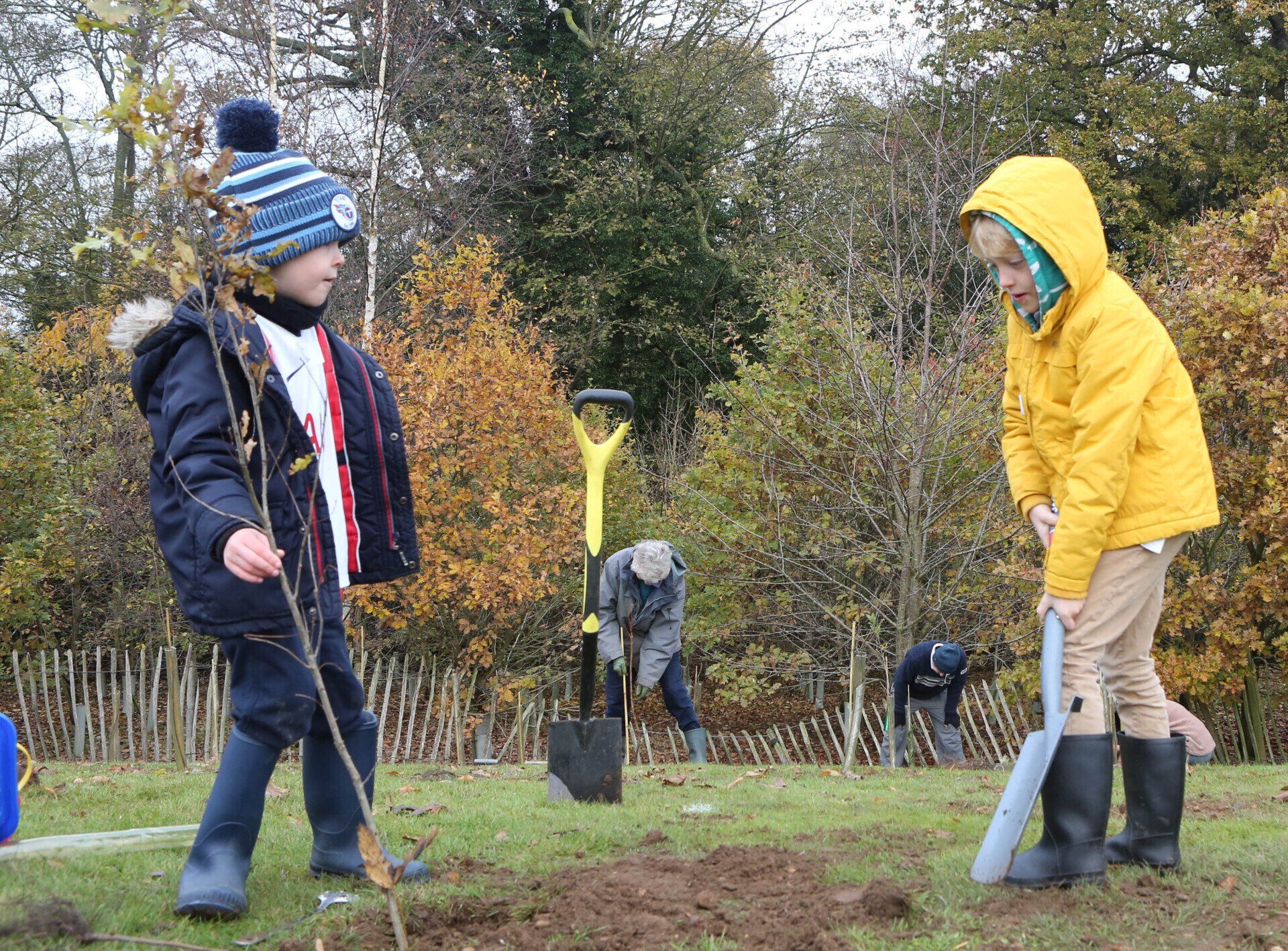
The Colchester Woodland Biodiversity Project was launched by Colchester Borough Council in 2019 and presents a unique opportunity for everyone to work together and develop a legacy of a greener borough for future generations.
Launched shortly after the council declared a Climate Emergency in July 2019, the 5-year project aims to improve the health and wellbeing of communities and help people connect with the environment; develop, enhance, and diversify wildlife within Colchester; and reduce the environmental impact of the Council and influence others to follow their lead. There are lots of different activities that take place under the project.
Tree planting -
Each year since the project launched the council invite the public to join them at locations across the borough to help plant trees during the planting season (November – March).Since its launch in 2019, the project has seen over 44,500 trees and shrubs planted across the borough and despite the record-breaking dry spring and summer in 2020, the majority of these are established and flourishing.
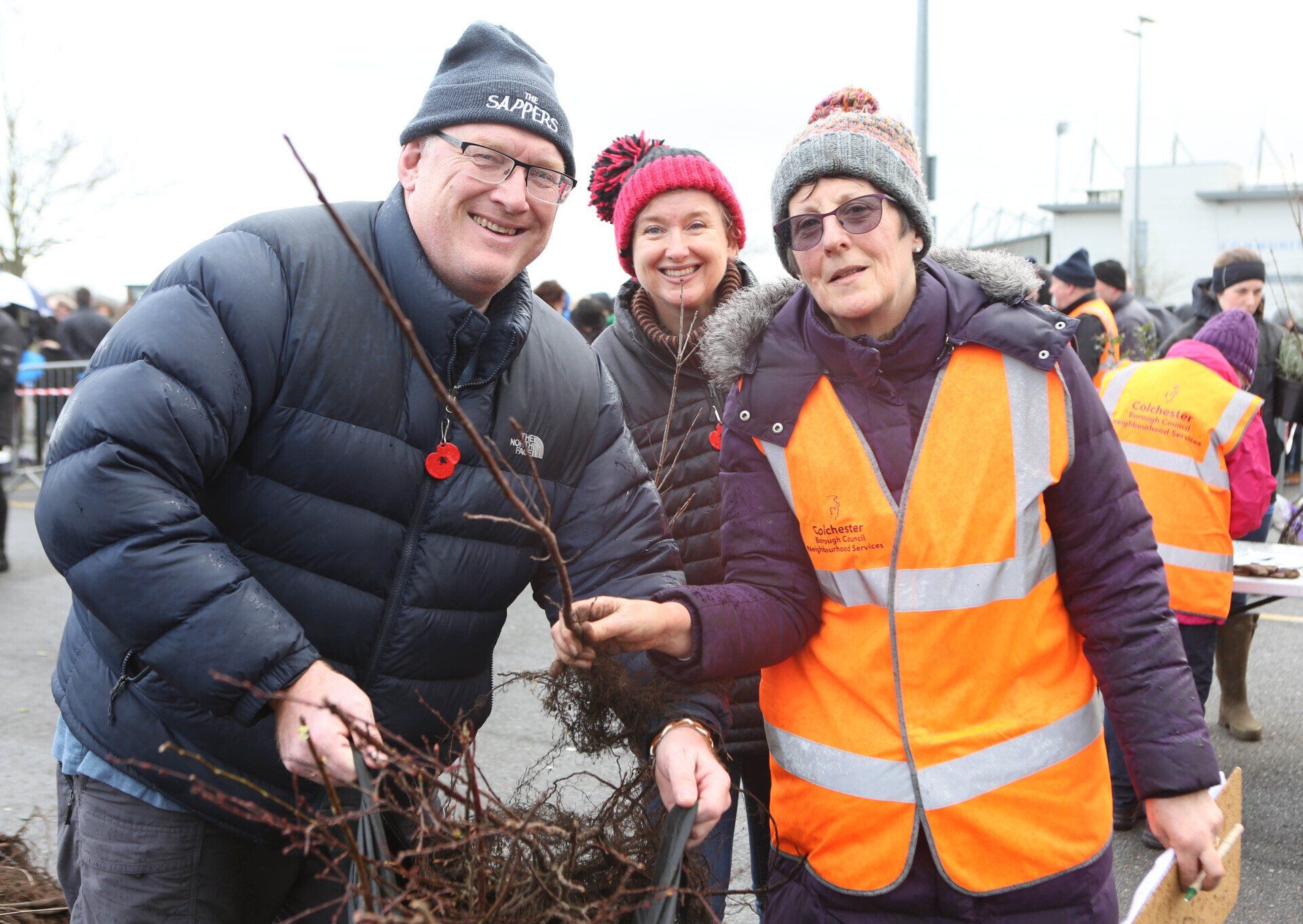
The council work in collaboration with the Woodland Trust who supply many of the trees, to agree the areas where they are to be planted. As well as supplying trees, the Woodland Trust also provides biodegradable rabbit guards to help protect each specimen without the risk of contaminating the environment with plastic debris.
All the planting days under the project are supported by Together We Grow CIC, a not-for-profit Social Enterprise improving the lives of communities and individuals through encouraging engagement with nature, which is based at the beautiful Big Garden in High Woods Country Park, Colchester.
When Covid restrictions stopped public planting events taking place in early 2021, Together We Grow continued to plant trees as part of the project, even working with
Refugee Action Colchester to establish a men’s mental health group who also supported planting activity
Covid Blossom Circles
To launch planting for Year 3 of the project in November 2021, the council worked with members of the public, and invited NHS and Community 360 worker to plant 4 blossom circles at Kings Head Meadow in Castle Park as a memorial for the Covid 19 pandemic.
Based on the popular Japanese custom of Hanami (enjoying the transient beauty of flowers), which is an established part of culture in Japan, the idea builds on an initiative launched by the National Trust that has seen blossom circles planted as a Covid memorial in London, Newcastle, Nottingham, Plymouth and other locations across the UK.
The council are also working with local poets to create poetry to be displayed alongside the blossom circles. It is hoped that this area will be a place to remember all those who have lost their lives, honour key workers and reflect on the boroughs shared experience of the pandemic and help to signal reflection and hope following Covid-19.
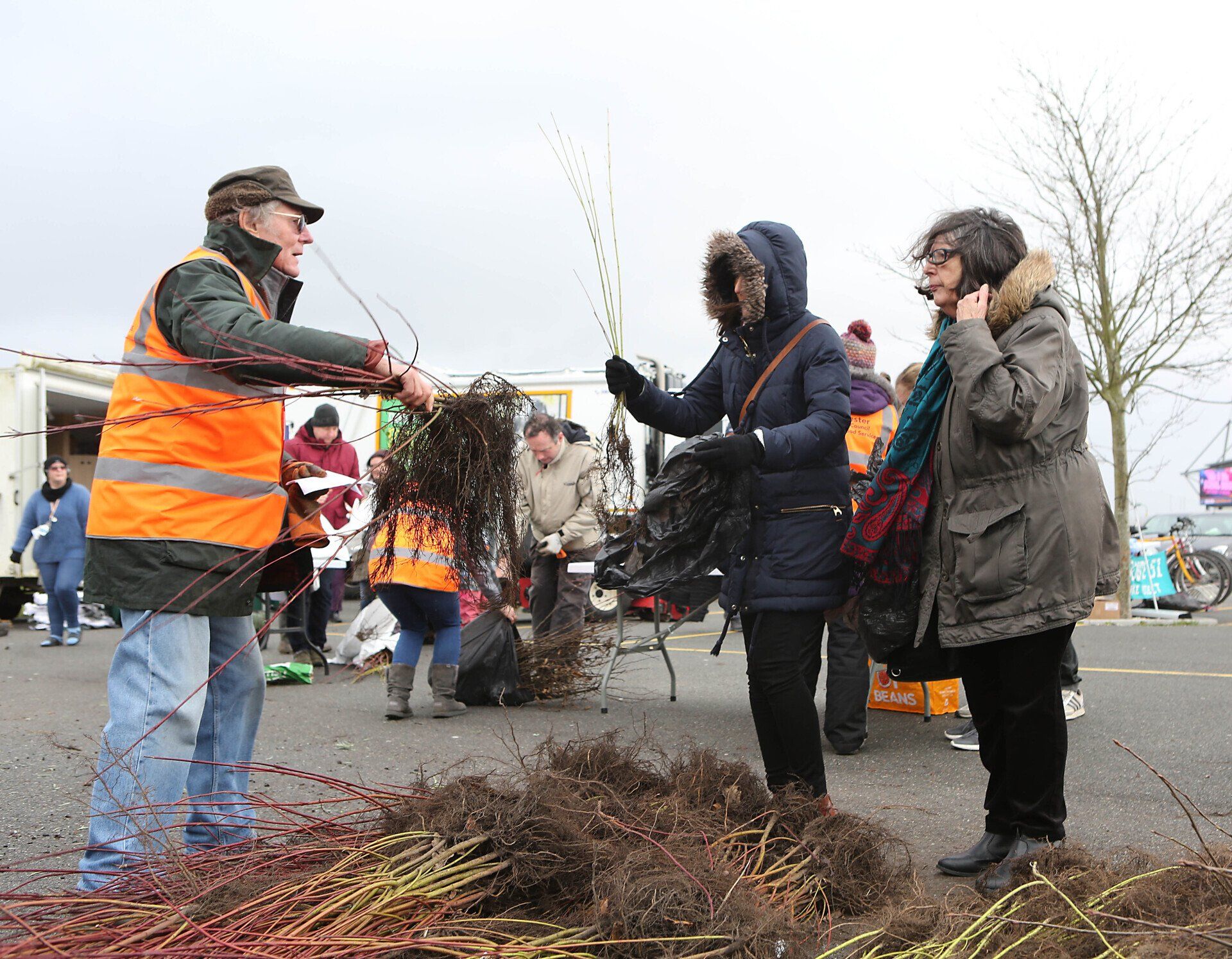
Local Authority Treescape Fund - The project also works to plant trees in parklands and urban areas and along riverbanks, roads, and footpaths, thanks to the Local Authority Treescape Fund, awarded by the Forestry Commission to support tree planting outside of woodlands.
Essex County Council (ECC), in partnership with Colchester Borough Council, Epping Forest District Council and Harlow Council, successfully applied and secured £300,000 for the planting and maintenance of 5,595 trees across Essex under this fund.
The planting is part of ECC’s Essex Forestry Initiative, and the trees will be planted in various settings, such as riversides, urban areas, infilling of old hedgerows and to create wood pasture across the county. Planting trees in urban settings supports wildlife and habitat connectivity, but it is also important to plant trees close to where people live, for health and wellbeing benefits.
The fund targets areas with trees that have been neglected or suffered damage in the past, including disused and vacant community spaces and those affected by tree diseases. So far 120 trees which are a mix of native broadleaf species, such as field maple, hawthorn, wild cherry, rowan, wild service tree and lime, have been planted along cycle paths in Colchester, with more planned over the coming months.
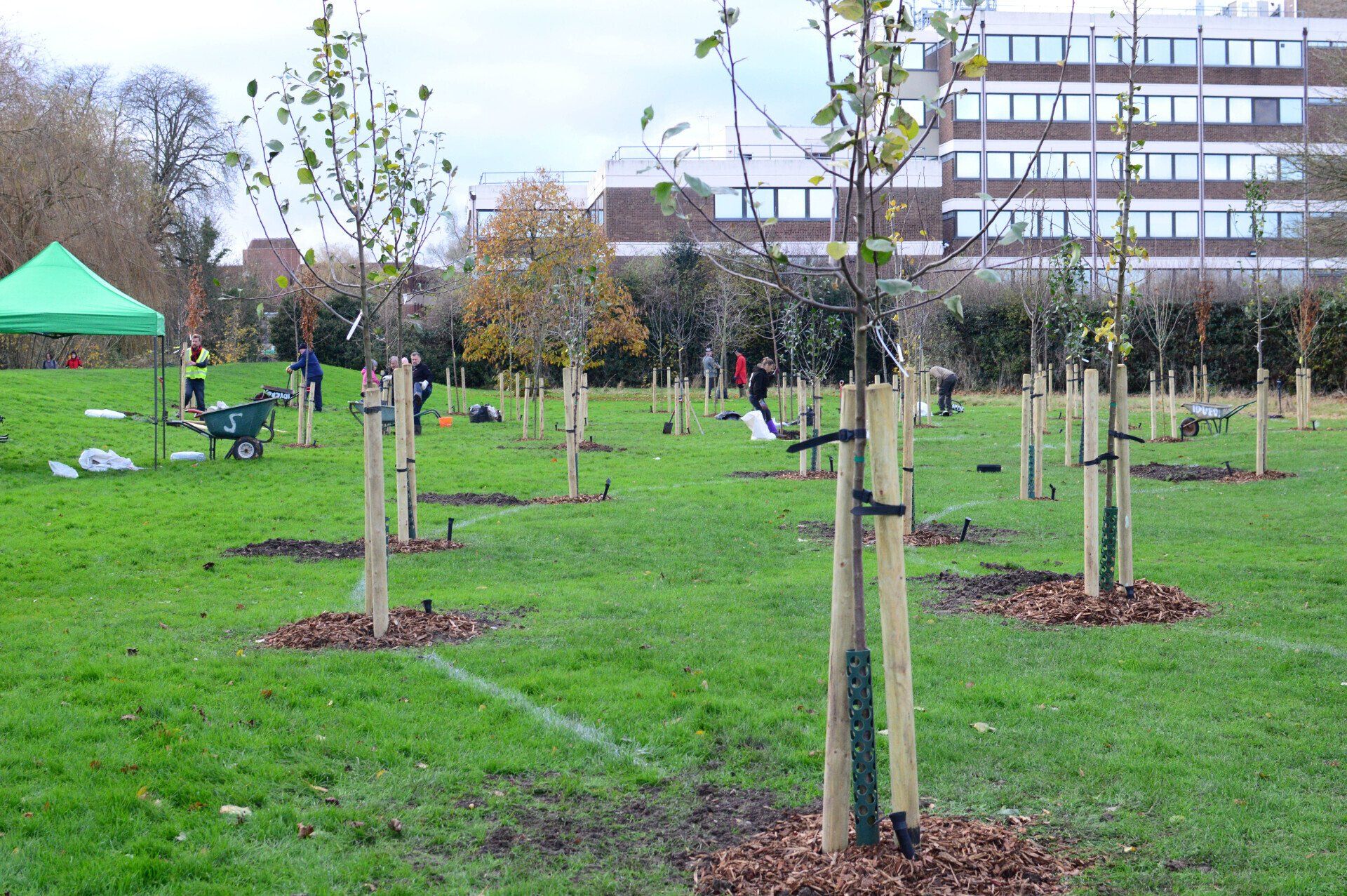
Trees for Years -
The council also holds an annual Trees for Years giveaway, where they give away free trees to residents. Usually taking place in February each year, the initiative offers residents a helping hand to green-up their gardens and the borough. In 2020 the giveaway event was extended as part of the Colchester Woodland and Biodiversity Project and ten thousand native trees, shrubs and fruit bushes were given out to residents at the Job Serve Community Stadium.
Unfortunately, due to Covid restrictions the event had to be postponed in 2021, but will be back and bigger than ever in 2022 to mark the 15th year of the event, with plans to give away 15,000 trees, shrubs and fruit bushes in celebration.
This scheme is made possible through sponsorship from idVerde, which works in partnership with the council to maintain the borough’s green spaces, and through funding from the Colchester Woodland and Biodiversity Project.
No Mow -
The council have also changed the grass cutting regime in 10 areas across the borough to encourage greater biodiversity in some of our green spaces, with a further 14 areas being left to naturalise. The cutting regime in these areas has changed from once every 3 weeks to once at the end of the growing season (around mid-autumn). This will encourage wildflower growth and help develop the area for invertebrates such as bees, butterflies, and moths.
The Council have also worked in collaboration with Wivenhoe Town Council, Elmstead Parish Council, the Wivenhoe Biodiversity Group and contractors ID Verde to begin a trial applying a conservation management approach to green spaces in residential areas to boost biodiversity and engage people in nature recovery. This involved altering the way selected verges and areas of open space are managed to encourage wildflower or naturalisation and better biodiversity. The trial has been a huge success with some amazing results (see below) and the plan is to now work with other parish and town councils to adopt this approach.
Biodiversity: 150 different flower species – we expected about 80.
Abundance: 3 – 29 times more flowers in un-mown areas compared to mown.
Public support: We logged all interactions with people, on-line and in person, and rated them “pro” or “con”. 10:1 people were in favour.
Public involvement: 10 residents committed 180 hours to the surveys. Numerous people asked about helping wildlife in their own gardens.
Economics: Zero cost, with savings to come.
Carbon: 90% less carbon emissions per site.
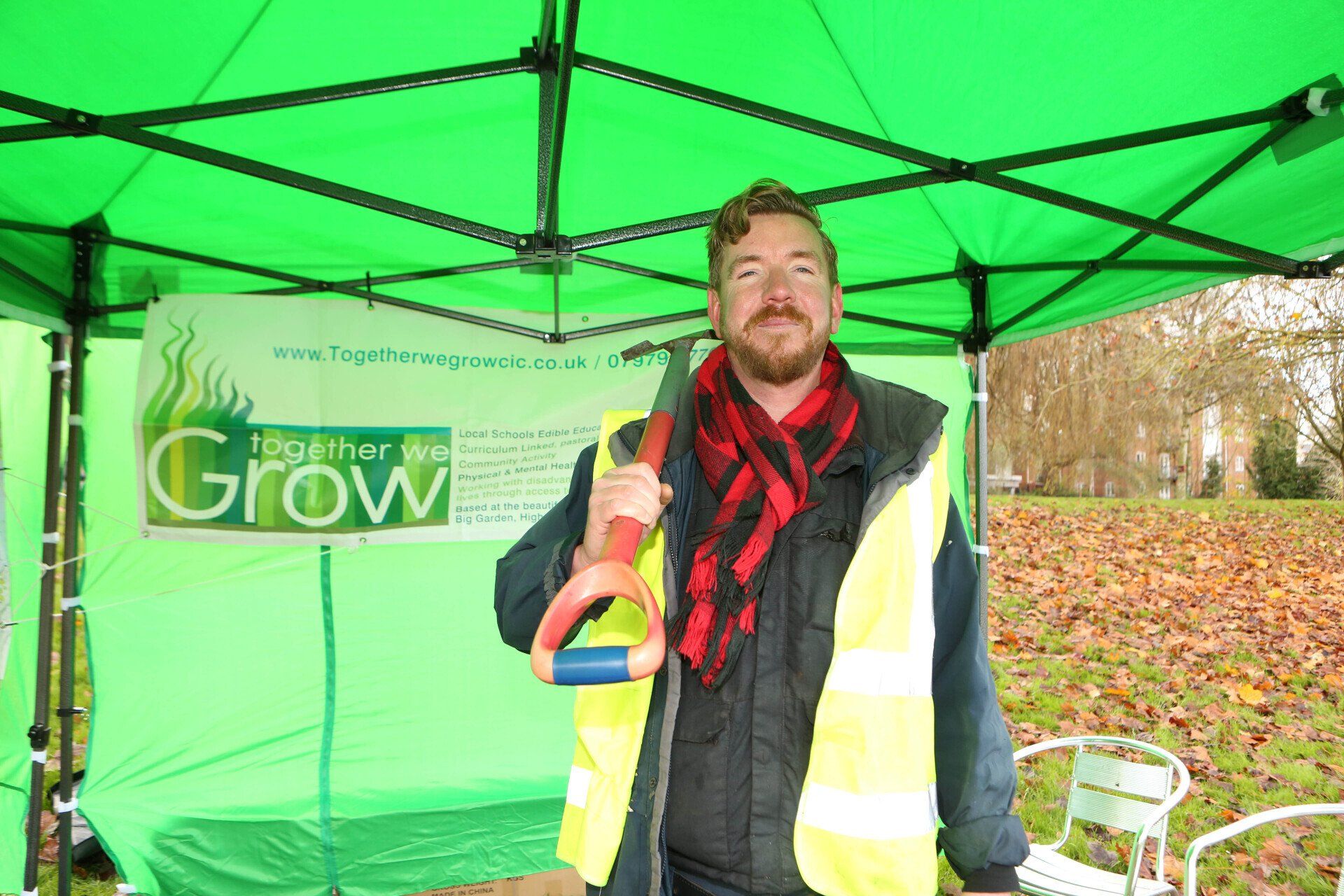
Tree Guardians - Through the project the council has come in to contact with several members of the public who have taken it upon themselves to become ‘tree guardians’ and help support the initiative by regularly checking in on newly planted trees in some of our green spaces. The Council’s Woodland and Open Spaces Project Officer, is now in regular contact with these tree guardians, supplying them with materials they need such as mallets, bamboo canes and rabbit guards, and the council is on the lookout for more guardians across the borough! For more information on the project click here
Glyphosate reduction -
In September 2020 the Councils Environment and Sustainability Panel agreed to end the use of glyphosate-based products on Colchester Borough Council owned land for general maintenance by the end of March 2021. A managed approach to phase out glyphosate use across Colchester’s green spaces has been developed, discussing alternative options and identifying new opportunities to enhance biodiversity. The council is now working with partners, such as Colchester Borough Homes, to phase out the use of glyphosate from general use on their operations too.
An exception will be made for the treatment of some invasive species such as Japanese knotweed and giant hogweed, which are a serious threat to biodiversity. With these invasive species, the chemical is safely injected into the plant.
You can keep up to date with the project, and find out more about how you can get involved in some of these great initiatives by clicking here
WildEast Blog

Powered by LocaliQ
Follow Us
SIGN UP FOR NEWS & UPDATES
Newsletter Sign Up
Thank you for signing up to our newsletter.
Please try again later.
Privacy / Terms & Conditions / Sitemap
